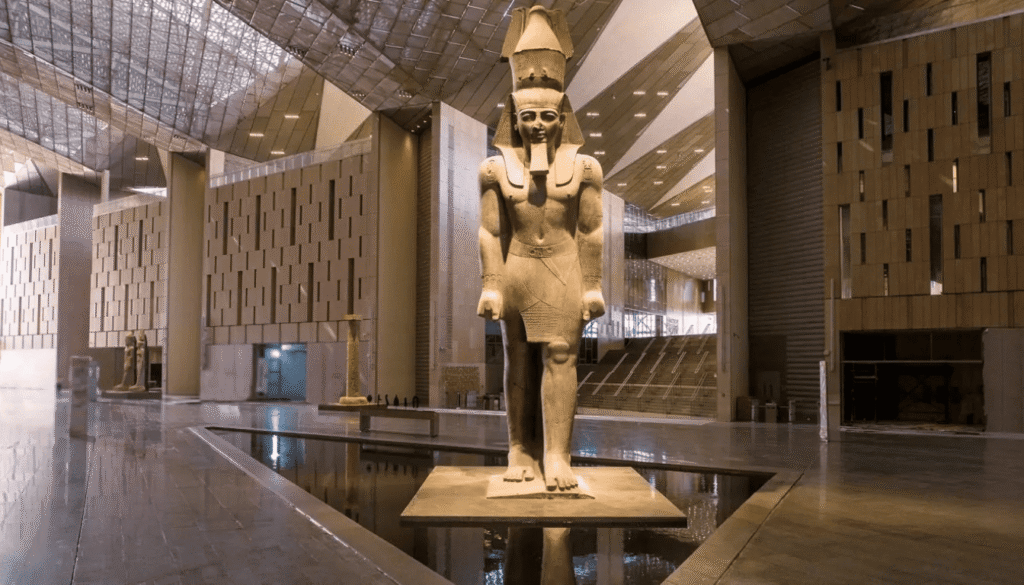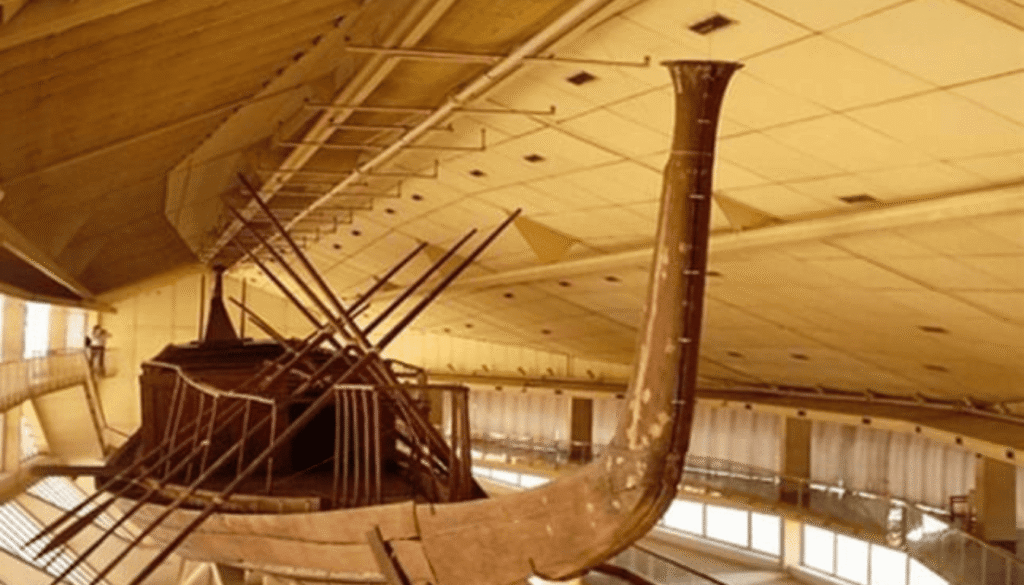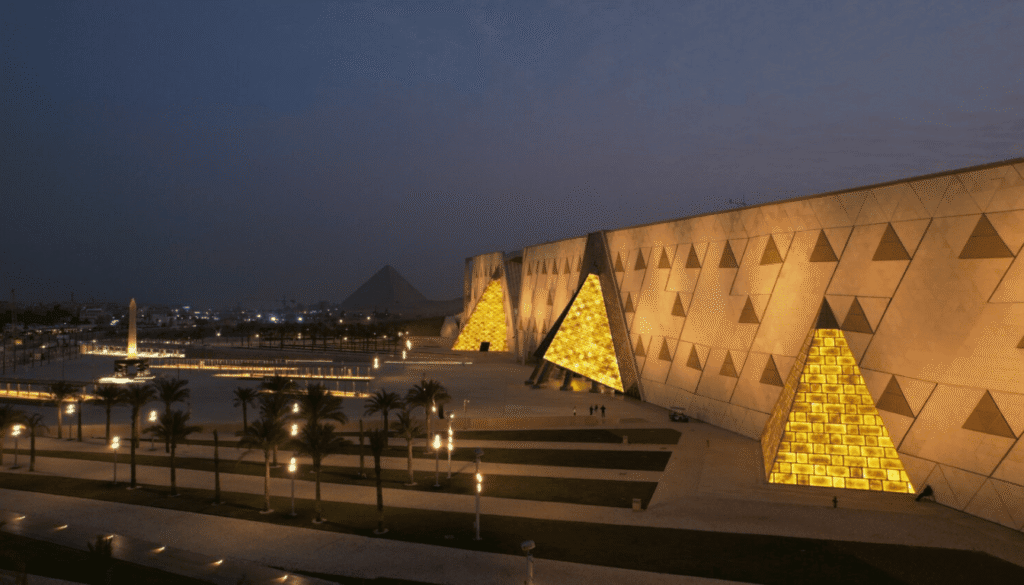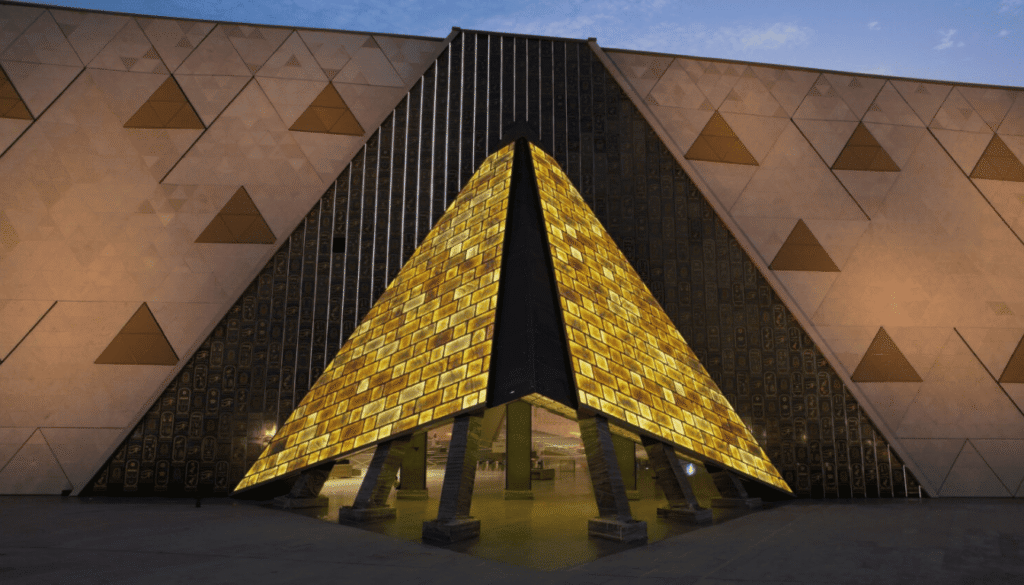Standing at the edge of the Giza Plateau, there’s a building that’s been years in the making—a structure so ambitious that it promises to change how we experience ancient Egypt forever. The Grand Egyptian Museum, or GEM as locals call it, isn’t just another museum. It’s a monument to human curiosity, built to house the greatest archaeological treasures of a civilization that captivated the world for millennia.
If you’ve ever dreamed of walking among pharaohs, gazing at golden masks under perfect lighting, or understanding what daily life looked like 3,000 years ago, this is your moment. The GEM is opening its doors, and trust me, you’ll want to be among the first to step inside.
Why the Grand Egyptian Museum Changes Everything
Let me paint you a picture. Imagine 120 acres dedicated entirely to ancient Egypt—the world’s largest archaeological museum focused on a single civilization. That’s roughly the size of 90 football fields, filled with artifacts that tell stories spanning 5,000 years.
The scale is breathtaking, but what really matters is what this means for you as a traveler. For decades, Egypt’s treasures were scattered across storage facilities, displayed in cramped conditions, or hidden away where no one could appreciate them. The GEM changes that narrative completely.
This isn’t just a cultural project—it’s an economic lifeline expected to draw over 8 million visitors every year. Egypt is betting big on the GEM to revitalize tourism, and honestly, walking through the space makes you understand why. The building itself feels like a bridge between ancient and modern, where cutting-edge architecture meets timeless history.
“How Egypt’s Infrastructure Supports Tourism Growth 2025”
When Can You Actually Visit?
Here’s where things get interesting, and I want to give you the straight facts because travel planning depends on accurate timing.
Right now, the GEM is in what they call a soft opening phase. You can visit certain areas—the Grand Hall, the breathtaking Grand Staircase, the Atrium, some commercial spaces, and the outdoor gardens. It’s like getting a preview of a blockbuster movie, and even this limited access is worth the trip.
But mark your calendar for November 1, 2025. That’s when the full grand opening happens, and the museum will unveil everything it’s been holding back.
There’s a catch though. From October 15 to November 3, 2025, the entire complex closes down for final installation work. If you’re planning a trip during those dates, you’ll need to adjust your itinerary. This closure is crucial—they’re installing the crown jewels of the collection, the exhibits everyone’s been waiting for.
The Exhibits You Can’t Miss
Walking into the GEM feels like stepping into a carefully orchestrated journey through time, and it starts the moment you enter the Grand Atrium.
Meeting Ramses II Up Close
Your first encounter is with an 11-meter-tall statue of Ramses II, weighing 83 tons of solid red granite. Seeing it in person does something to you. This isn’t a replica or a reconstruction—it’s the actual statue that once stood in Memphis over 3,000 years ago, watching over a city that was the heartbeat of an empire.
The atrium itself is architectural poetry. The designers positioned everything so that when you look through the glass walls, you see the pyramids of Giza in the distance. It’s not accidental. The museum literally frames the ancient monuments, connecting what’s inside with what stands outside.
Look up as you walk through, and you’ll spot something unprecedented—the world’s first hanging obelisk. It belonged to Ramses II, and seeing it suspended in space like that feels almost impossible.

“Private tour to Giza Pyramids, Saqqara and Memphis”
The Grand Staircase Journey
This is where the museum gets clever. The Grand Staircase isn’t just about getting from one floor to another—it’s a vertical gallery lined with over 60 massive statues arranged chronologically. You’re essentially walking through Egypt’s dynasties, watching the evolution of kingship and the relationship between pharaohs and gods.
You’ll see Senusret I, Thutmose III, Hatshepsut—names you might remember from history class but never imagined standing face-to-face with. There are royal sarcophagi too, including the one that held Thutmose I, and each piece tells you something about how Egyptians viewed death, divinity, and legacy.
What Opens in November: The Big Reveal
When the GEM fully opens on November 1, 2025, three restricted areas will finally welcome visitors, and these are the real showstoppers.
Tutankhamun’s Golden Hall is the crown jewel. For the first time in history, King Tut’s complete collection—over 5,000 artifacts—will be displayed together in one space. Yes, the iconic golden mask will be there, but so will items most people have never seen: his chariots, weapons, clothing, jewelry, and personal belongings. It’s an unprecedented look into royal life during Egypt’s New Kingdom era.

Khufu’s Solar Boats Pavilion houses something extraordinary—a 4,500-year-old cedar wood vessel that was buried beside the Great Pyramid. Ancient Egyptians believed the pharaoh needed this boat to sail across the sky with the sun god Ra in the afterlife. The craftsmanship is stunning, and seeing it preserved after all these millennia is humbling.

“Cairo: Dinner with Light and Sound Show in Pyramids of Giza”
The Royal Mummies Gallery might be the most atmospheric space in the entire museum. This climate-controlled chamber houses the actual mummies of Egypt’s most famous rulers, including Ramses II and Seti I. Walking through feels reverent, almost sacred. These aren’t just historical figures—they’re actual people who ruled empires, built monuments, and shaped civilization.
The Hidden Treasures
Beyond the famous names, the main galleries span the entire arc of Egyptian civilization—from the Predynastic period through the Greco-Roman era. That’s 5,000 years of human achievement in one building.
Don’t skip the Hidden Hall. This section showcases recent archaeological discoveries, including the Al-Assasif coffins with their vibrant colors still intact. These are finds from the past decade, proving that Egypt still has secrets waiting to be uncovered.
Planning Your Visit: Everything You Need to Know
Let’s get practical because visiting the GEM requires some preparation.
Ticket Prices
For international visitors, admission costs 1,200 Egyptian pounds (about $24 USD) for adults. Students and children pay 600 EGP (approximately $12 USD), but you’ll need to show valid student ID or proof of enrollment.
If you want a guided tour—and I recommend it for your first visit—expect to pay around 1,700 EGP or $33-34 for a 90-minute tour. The guides bring the exhibits to life with stories and context you’d miss otherwise.
How to Book
This is important: you must book online through the official website. The museum isn’t set up for large-scale on-site ticket sales, so showing up without a reservation might mean you can’t get in.
They only accept credit cards—no cash. Bring your passport or Egyptian ID for verification at entry. It’s strictly checked.
Timing matters too. Arrive at least 30 minutes before any scheduled tour. If you’re visiting independently, get there early—between 9:00 AM and 11:00 AM. The museum gets crowded fast, and morning light through the atrium’s glass walls creates incredible photo opportunities.
Location and Timing
The GEM sits just 2 kilometers from the Pyramids of Giza, making it perfect for a combined visit. You can easily do both in one day, though I’d recommend dedicating separate days if you really want to absorb everything.
Plan for at least 3 to 4 hours inside the museum. That’s the minimum to see the main exhibits without rushing. If you’re a history enthusiast or photographer, you’ll want more time.
The nearby Sphinx International Airport makes reaching the GEM convenient, especially if you’re connecting to other destinations like Luxor or Aswan via charter flights.
Modern Technology Meets Ancient History
What sets the GEM apart from traditional museums is how it embraces technology without letting it overshadow the artifacts.
The museum uses virtual reality, 3D projections, and interactive touchscreens throughout the galleries. These aren’t gimmicks—they enhance understanding. You can see how temples were built, watch reconstructions of ancient ceremonies, or explore detailed explanations of hieroglyphics.
The HoloLens Pyramid Experience uses augmented reality to show you how the pyramids were constructed. You’re standing there with the real pyramids visible through the windows while watching a digital simulation of ancient workers hauling limestone blocks. It’s powerful.
There’s a multimedia center designed for the social media age. Share photos, upload videos, and connect with other visitors. The museum understands that modern travelers want to document and share their experiences.
Accessibility for Everyone
The GEM was designed from the ground up to be accessible, and it shows.
Wheelchair users will find ramps, elevators, and accessible restrooms on every level. The museum features Braille labels, tactile paths for the visually impaired, and audio descriptions throughout. They offer sign language tours upon request—just arrange this when booking.
Language support is comprehensive: Arabic, English, French, Spanish, German, Italian, Japanese, and Chinese. All major exhibits have translations, and you can request audio guides in these languages.
This isn’t an afterthought. Accessible tourism is core to the GEM’s mission, and it’s genuinely inclusive in ways many museums still struggle with.
Conservation and Sustainability
Behind the scenes, the GEM houses something remarkable—the largest conservation center in the Middle East and North Africa. The GEM Conservation Center (GEM CC) is where damaged artifacts get restored using cutting-edge techniques.
The building itself reflects environmental consciousness. Natural ventilation systems reduce energy consumption, solar panels provide renewable power, and the design minimizes environmental impact. The museum aims for ISO certification in quality and environmental management, setting standards for future projects across the region.
This matters because it shows respect—for the artifacts, for visitors, and for the planet. Ancient Egyptians built to last millennia. The GEM honors that legacy by building sustainably.
Making the Most of Your Egypt Journey
The GEM isn’t meant to be visited in isolation. It’s the gateway to understanding everything else you’ll see in Egypt.
Visit the museum first, before exploring the Pyramids of Giza. The exhibits provide context that makes standing before those massive structures even more meaningful. You’ll understand the engineering, the religious significance, the sheer human determination that created them.
If your itinerary includes Luxor’s Valley of the Kings or the temples at Karnak, the GEM’s chronological displays help you grasp the timeline. You’ll know which pharaohs came before others, which dynasties saw the greatest building projects, and how artistic styles evolved.
Egypt’s improving infrastructure makes getting around easier than ever. Local transport is affordable—long-distance buses between major cities cost just $10-20. Always carry your passport or ID, and wear comfortable walking shoes. Egyptian archaeological sites involve lots of walking, often on uneven surfaces.

“Book now to visit Grand Egyptian Museum”
Why Now Is the Perfect Time to Experience Egypt’s Renaissance
Something remarkable is happening in Egypt right now, and the Grand Egyptian Museum sits at the center of this transformation. The country isn’t just preserving its ancient heritage—it’s reimagining how the world experiences it.
Egypt’s Tourism Revolution
Travel to Egypt in 2025 looks completely different from even five years ago. Massive infrastructure investments are changing the game for visitors, making it easier than ever to explore beyond the usual tourist circuits.
Take the high-speed rail revolution, for instance. New rail lines connecting Cairo, Giza, and Alexandria are slashing travel times dramatically. What used to be a three-hour journey between Cairo and Alexandria now takes just over an hour. For you, this means more time exploring and less time in transit.
These aren’t small projects either. Egypt has poured resources into the $18.5 billion Red Sea megaproject alongside other developments that enhance accessibility to tourist areas. The vision is clear: make Egypt’s wonders easier to reach while maintaining their authentic character.
The Grand Egyptian Museum benefits directly from these improvements. Its location near the Pyramids of Giza, combined with improved transport links, makes it a natural hub for exploring the greater Cairo area.
What Makes the Collection Truly Unique
Every major museum has Egyptian artifacts—the British Museum, the Louvre, the Metropolitan Museum of Art. But the GEM possesses something none of them can replicate: completeness and context.
When Tutankhamun’s tomb was discovered in 1922, over 5,000 items were catalogued. For decades, they’ve been split between different locations, with many stored away from public view. The GEM brings them together for the first time, exactly as Howard Carter found them. You’ll understand the tomb not as scattered treasures but as a complete burial assemblage, each piece playing its role in the pharaoh’s journey to the afterlife.
This completeness extends beyond Tut. The museum’s collection represents continuous ownership and care by Egypt itself. These aren’t colonial acquisitions or disputed holdings. They’re artifacts displayed in their homeland, interpreted by Egyptian scholars, presented to visitors from around the globe.
The difference is palpable. Walking through the galleries, you sense a kind of homecoming—these objects are where they belong, telling their stories in the land where those stories began.
Conservation: Protecting the Past for the Future
Let’s talk about something most visitors never see but should absolutely appreciate: the conservation work happening behind the scenes.
The GEM Conservation Center represents the largest facility of its kind in the Middle East and North Africa. Staffed by Egyptian and international experts, it’s where damaged artifacts undergo painstaking restoration. Some pieces have deteriorated over centuries of improper storage or environmental exposure. Others suffered damage during excavation or transport decades ago.
The work happening here isn’t just restoration—it’s archaeological detective work. Conservators use techniques like X-ray fluorescence to analyze pigments, CT scanning to see inside mummy wrappings without unwrapping them, and digital modeling to reconstruct broken objects virtually before attempting physical restoration.
Why does this matter to you as a visitor? Because it means what you’re seeing represents the absolute best presentation of these artifacts. Colors are accurate, structural integrity is ensured, and preventive measures protect them for future generations.
The museum’s commitment to sustainability reinforces this long-term thinking. Solar panels reduce fossil fuel dependence. Natural ventilation systems minimize mechanical heating and cooling. Water management systems ensure the desert climate doesn’t threaten artifact preservation.
Ancient Egyptians built monuments that lasted millennia. The GEM is building a museum worthy of that legacy, designed not just for this generation but for the next fifty.
Breaking Down Barriers: Accessibility as Core Design
Accessibility often gets mentioned as an afterthought in museum discussions. At the GEM, it’s fundamental architecture.
Wheelchair users don’t navigate through service elevators or back corridors—they use the same stunning spaces as everyone else. Ramps integrate seamlessly into the design. Elevators are positioned logically, not hidden away. Accessible restrooms exist on every level, not just ground floors.
For visitors with visual impairments, Braille labels accompany major exhibits. Tactile paths guide navigation without assistance. Audio descriptions provide rich detail about artifacts and spaces. Upon request, the museum arranges sign language interpreters for tours.
This inclusive approach extends to families with young children. Stroller access is straightforward, and family restrooms accommodate parents with multiple children. Interactive exhibits designed for kids appear throughout, making the museum engaging across age groups.
The language support—Arabic, English, French, Spanish, German, Italian, Japanese, and Chinese—ensures that nearly every international visitor can engage deeply with the content. Audio guides in these languages mean you’re not just reading translations but hearing narrated stories that bring the exhibits alive.
The Giza Plateau Experience: A Complete Day
Here’s how to maximize your visit to the Giza area, combining the GEM with the pyramids for an unforgettable day.
Start early at the Grand Egyptian Museum when it opens. Spend your morning inside, absorbing the artifacts, understanding the history, and appreciating the context. Give yourself at least three hours here—don’t rush.
Take lunch at one of the museum’s restaurants. The food is surprisingly good, and you’ll need the break. The cafés offer views of the pyramids, making even lunch part of the experience.
After lunch, head to the Pyramids of Giza themselves. They’re just 2 kilometers away, easily reachable by taxi or the museum’s shuttle service. Now, when you stand before the Great Pyramid, you understand what you’re seeing. You’ve learned about Old Kingdom construction techniques, seen the tools ancient workers used, and grasped the religious significance of these structures.
Visit the Sphinx, explore the Solar Boat Museum (if it’s open alongside the GEM’s pavilion), and watch sunset over the pyramids. The light at day’s end transforms the limestone, creating that golden glow you’ve seen in photographs.
This combined experience—museum in the morning, monuments in the afternoon—provides complete immersion in ancient Egypt’s grandeur. You’re not just sightseeing; you’re understanding.
Looking Forward: The Museum’s Growing Legacy
The GEM’s full opening on November 1, 2025, is a beginning, not a conclusion. The museum has plans for temporary exhibitions, traveling displays, and cultural programming that will evolve over years.
Academic partnerships are already forming. Universities worldwide are collaborating with GEM researchers, creating opportunities for new discoveries and interpretations. You might visit in 2026 and find exhibits that didn’t exist in 2025, as ongoing archaeological work uncovers new sites and artifacts.
Educational programs are expanding too. The museum is developing workshops, lecture series, and hands-on experiences that go beyond traditional exhibits. Future visits might include papyrus-making workshops, hieroglyphics lessons, or behind-the-scenes conservation lab tours.
For Egypt, the GEM represents a statement to the world: this civilization’s legacy continues to inspire, educate, and amaze. For visitors, it’s an invitation to engage with history not as distant past but as living heritage.
The gateway is opening. What you discover beyond it will change how you see ancient Egypt—and perhaps how you see the modern world’s connection to its ancient roots.
The Gateway Opens
The Grand Egyptian Museum represents something profound. It’s not just preserving the past—it’s making it accessible, understandable, and relevant to modern visitors. Every exhibit, every technological feature, every architectural choice serves one purpose: connecting you with ancient Egypt in ways that weren’t possible before.
November 1, 2025, marks the beginning of a new chapter in how we experience one of history’s greatest civilizations. Whether you’re a first-time visitor to Egypt or a returning enthusiast, the GEM offers something unprecedented.
This is your invitation. The gateway to ancient Egypt is opening, and what lies beyond those doors will stay with you long after you’ve returned home. The pharaohs are waiting, their stories preserved in gold and stone, ready to be discovered all over again.


Pingback: Top 20 Fascinating Facts About Egypt You Probably Didn’t Know - Discover Egypt Now